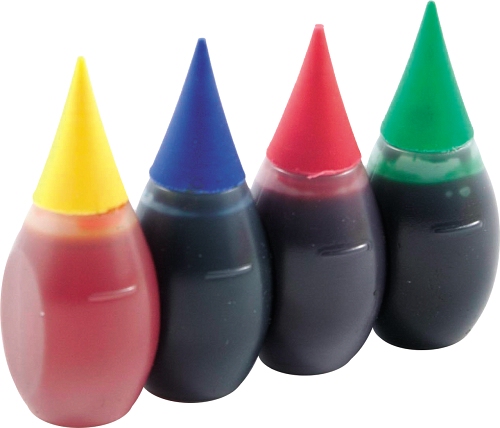Food dyes … artificial food coloring. It’s in more that just birthday cake these days.
 Artificial dyes are showing up in alarming numbers in our food supply! They are derived from petroleum. Ahem … did you hear me? Pet ro le um … yes the same petroleum that’s in our cars. Processed birthday cake is easy enough to avoid.
Artificial dyes are showing up in alarming numbers in our food supply! They are derived from petroleum. Ahem … did you hear me? Pet ro le um … yes the same petroleum that’s in our cars. Processed birthday cake is easy enough to avoid.
But if you’ve had any of these products lately, it’s in there too. And the thing is … t he average consumer may see ‘artificial flavor or colors added’ but doesn’t know how harmful that can really be. They are now found in:
- Yogurt
- Boxed macaroni and cheese
- Puddings
- Lunchables
- Fruit Roll Ups
- Candy
- Pickles
- Meat
- Vitamins
- Cough syrup
- Toothpaste
- Hair products
- Health and beauty items
- Laundry detergents
The US Food and Drug Administration divides food colorants into two categories:
- Certifiable Color Additives which are derived from petroleum or coal tars and are essentially synthetic chemicals created in laboratories. These are referred to as “artificial” colors.
- Exempt Color Additives are derived from plant, animal or mineral sources which have been processed in some way. The layman might call these “natural” colors because of their origins, though they most likely came out of a factory or chemical plant just like artificial colors. They are ANYTHING but natural. Do not be fooled!!!
Did you know?
1. There are only SEVEN food dyes used in the United States today. The three most commonly used dyes are Red No 40 and Yellow No 5 and No 6.
Another Red dye, No 3, has been acknowledged by the FDA as a carcinogen, yet it’s still in the food supply. I recently did a post around Easter time that Red No 3 is still is purple PEEPS!
| FD&C # | Hue | Name | Common Uses |
| Blue #1 | Bright Blue | Brilliant Blue | Beverages, powders, jellies, confections, condiments, icings, syrups, extracts |
| Blue #2 | Royal Blue | Indigotine | Baked goods, cereals, snack foods, ice cream, confections, cherries |
| Green #3 | Sea Green | Fast Green | Beverages, puddings, ice cream, sherbet, cherries, baked goods, dairy products |
| Red #3 | Cherry-Red | Erythrosine | Canned Cherries, confections, baked goods, dairy products, snack foods |
| Red #40 | Orange-Red | Allura Red | Gelatins, puddings, dairy products, confections, beverages, condiments |
| Yellow #5 | Lemon Yellow | Tatrazine | Custards, beverages, ice cream, confections, preserves, cereals |
| Yellow #6 | Orange | Sunset Yellow | Cereals, baked goods, snack foods, ice cream, beverages, confections |
2. Food Dyes have been shown to cause hyperactivity in kids
- According to Forbes.com “the link between artificial colors and behavioral problems is a concern, especially for parents of children diagnosed with ADHD”. But conflicting results from studies among scientists explain why there are still seven approved colors in the United States. They just can’t seem to agree.
- The CSPI (Center for Science in the Public Interest), a non-profit watchdog group, continues the push to ban the existing dyes, or at least put warning labels on products that contain them, like the European counties do.
- After a study in 2007 at the University of Southampton, the six dyes that came to be known as the “Southampton Six” were linked to hyperactivity in children, and now require warning labels in the E.U.
- The FDA, however, is not so convinced that such measures are necessary.”
3. The Center for Science in Public Interest has petitioned the FDA to ban the use of yellow No 5, along with other dyes.
- On June 2, 2008 the CSPI formally petitioned the FDA in banning the use of Yellow No 5 and Red No 40.
4. Food dyes provide no nutritional value whatsoever to foods, it is just purely for cosmetic reasons.
- The use of these dyes is to mask the absence of real food and make a low nutritional product appealing, especially to children. It’s a disgrace! You don’t see adults menus in a restaurant all full of colors and loaded with artificial dyes, why should our kids foods have it in there?
5. Major food corporations such as Kraft have removed these dyes from their foods overseas in countries like Europe and replaced them with natural healthier options.
- Kraft’s Oscar Meyer Lunchables contain several of these dyes here in the US, but not in the UK
- Mars products like Starbursts Chews, Skittles and M&Ms contain a rainbow of these food dyes, but not in the UK where the use natural colorings
- McDonald’s uses real strawberries in their strawberry shakes in the UK, where in the US they use Red No 40 (among other chemicals)
6. Other countries require a warning label on foods with artificial colors.
- Should the above manufacturers (among others) choose to use products with artificial dyes and colors in the UK, they are required to have a warning label stating that the food “may have an adverse effect on activity and attention in children.”
There is a chart on the Center for Science in Public Interests Website that breaks down different food additives and their risk levels. Artificial colorings (along with Aspartame, Olestra, Saccharin, and Trans Fats) are under the X Avoid category. It is a very interesting read. Click here to see the chart.





Leave a Reply